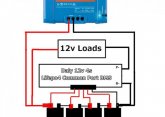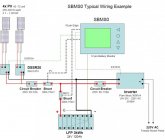Aussiecroc
New Member
- Joined
- Oct 28, 2019
- Messages
- 109

Can somebody please explain how this BMS can cut off the charging from the solar controller to the battery when the red and the black railroad tracks on the outer sides of the diagram completely bypass the BMS in the middle. Nothing can stop current over filling those batteries unless the outer wires are cut in some way? Am I wrong in my assumption that batteries can overfill and cause runaway etc with voltages as low 13.8 etc What am I missing here? I can see how it can cut off the load in a low voltage situation but what about the high (HVC)?



